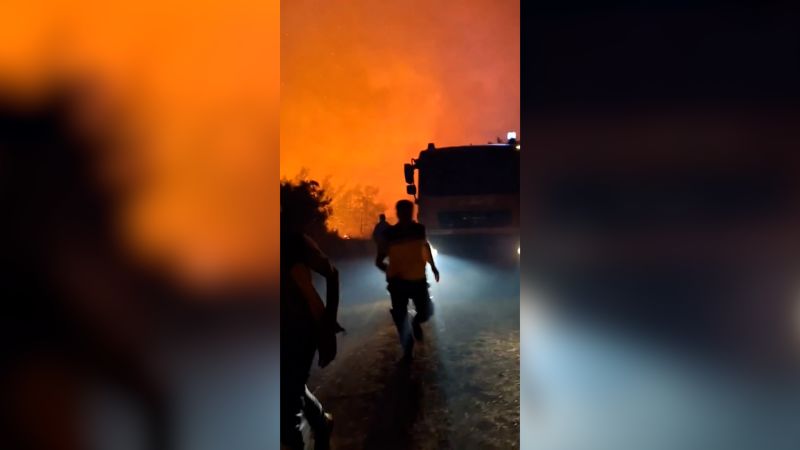Hundreds of individuals have been forced to evacuate their homes as wildfires intensify in northeastern Syria. According to civil defense officials, emergency crews are engaged in a desperate battle to control the rapidly spreading flames, which have been exacerbated by extreme heat and strong winds. The fires have devastated thousands of hectares of forest and farmland, primarily in the northwest Latakia Province.
The wildfires have been ongoing for nearly a week and represent a significant challenge for the Syrian government, which is striving to promote recovery in a nation scarred by over a decade of conflict and stringent sanctions. Basic services remain largely unavailable in many regions, complicating the response to this environmental crisis. The country is also grappling with a prolonged drought that has left many areas vulnerable to such devastating fires.
Impact on Communities and Response Efforts
The fires have led to the displacement of families, causing significant distress in local communities. Residents have reported losing their homes and livelihoods as the flames engulf vast areas of land. The humanitarian impact is severe, with many families seeking shelter and assistance amidst the chaos.
Emergency crews, including local firefighters and civil defense teams, are working tirelessly to contain the fires. Their efforts are hampered by the challenging weather conditions, including high temperatures and gusty winds, which continue to fan the flames. The government’s capacity to respond is further limited by the ongoing economic turmoil, making it difficult to mobilize necessary resources effectively.
Local authorities have called for assistance, urging the international community to provide support in combating the wildfires and addressing the underlying issues of drought and insufficient infrastructure. The situation highlights the urgent need for comprehensive disaster preparedness and response strategies in a region prone to natural catastrophes.
A Broader Context of Crisis
The current wildfires in Syria are not an isolated incident but rather part of a larger pattern of environmental degradation exacerbated by climate change and prolonged conflict. The country’s infrastructure has been severely compromised, limiting access to essential services and resources. As Syria’s government attempts to rebuild, these wildfires underscore the fragility of recovery efforts in a nation facing multifaceted challenges.
With the combination of drought and wildfires, the agricultural sector is under severe threat, further jeopardizing food security for a population already under strain. The international community’s response will be crucial in determining the resilience of affected communities and the long-term recovery of the region.
As the situation unfolds, the plight of those affected by the wildfires remains critical. Continued monitoring and support from both local and international entities will be essential in navigating the complex humanitarian landscape that has emerged in northeastern Syria.







































































